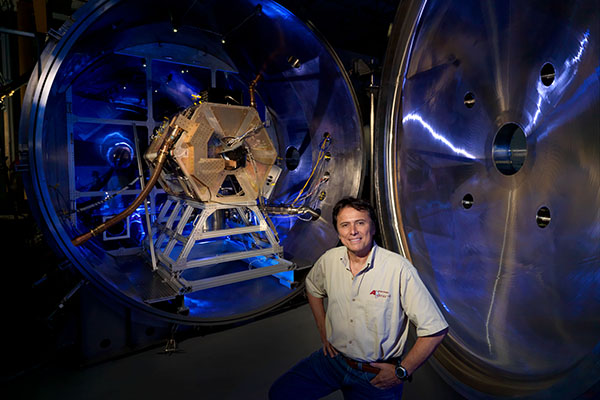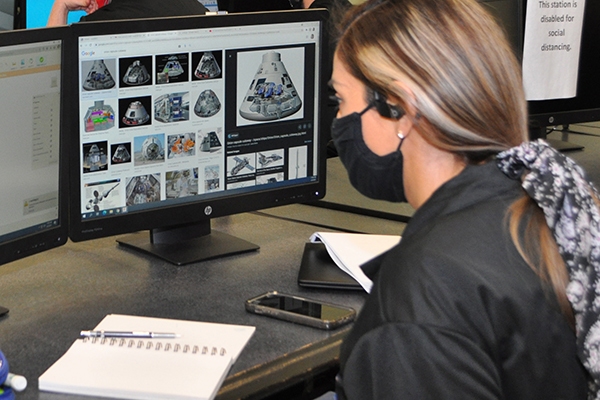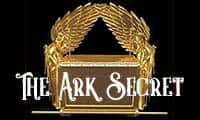NRCC students partner with retired astronaut

When New River Community College instructor Jeff Levy was considering what project to have students in his engineering design technology program work on this year, he took a shot in the dark. He emailed someone he had never met who had no direct ties to the community and who also worked halfway across the country, retired NASA astronaut Dr. Franklin Chang Díaz, CEO of Ad Astra Rocket Company in Houston, Texas.
That email turned into a lengthy phone call. That phone call turned into a unique educational opportunity for NRCC students in Levy’s class. As it turned out, Chang Díaz and his team at Ad Astra had often worked with Ph.D. program students, but typically not with first- and second-year community college students. But once he learned what Levy was interested in pursuing, he was immediately interested in helping those in Levy’s program learn more about his own passion for space travel, and in turn, perhaps he could inspire that same passion in a new generation of learners.

NRCC students would certainly be working with a subject matter expert and arguably one of the best in his field. The 25-year NASA veteran served on seven NASA Space Shuttle missions, tying the record for most spaceflights. A Costa Rica native also of Chinese descent, Chang Díaz was the first Latin American immigrant selected to join the NASA Astronaut Corps. The plasma physicist and mechanical engineer is also a member of the NASA Astronaut Hall of Fame and a graduate of the University of Connecticut and the Massachusetts Institute of Technology.
Chang Díaz and Levy formulated a plan that would allow NRCC students to work on a project to reverse engineer a prototype spacecraft bus for Ad Astra’s current project, VASMIR®, an advanced electric propulsion engine that could revolutionize logistical operations in space. For example, the engine could potentially be used to efficiently remove space junk from Earth’s orbit or perform satellite servicing. These are just a few of the many missions this engine could perform due to the nature of its versatile design.
Chang Díaz’s interest in working with NRCC’s students was twofold; 1) to make sure his corporation is socially responsible by helping educate those with an interest in the field, and 2) to inspire students to work in the space industry.
VASMIR® technology is the next step in the space transportation journey, and no one has built an engine like this before. Although chemical engines do currently exist and will still be necessary for our future in space, the creation of this new high-power electric engine would mean a sustainable, fuel efficient, and cost-effective solution for the problems chemical rockets cannot solve.
Chang Díaz, who began work on his project in the late 1970s, along with his team, have watched this engine transform from a concept to what it is now. Chang Díaz and the whole Ad Astra team look forward to what is in store for them in the near future, as they begin some of their final tests for TRL 5.
Levy and his students started on the Ad Astra project with Chang Díaz in August 2020, despite a pandemic that meant spending much extra time learning online via Zoom, with some limited in-person, physically distant lab work in three different lab spaces at NRCC’s location in Christiansburg. Chang Díaz and his team had created renderings and a video of the potential ship that would be powered by a VASIMR® engine, and students have been working diligently to recreate a design of that potential space or cargo ship, despite the changes and challenges in classroom versus online instruction.
“The students have adjusted well to the changes, treating the project like a real job,” said Levy.
The students agree that the work is challenging but well worth it.
“Due to the current circumstances secondary to the pandemic, this past year has been challenging, and it is not an ideal situation to work on a project of this magnitude,” said Mariela Farfan Ortiz, second-year NRCC student. “However, we are driven by the opportunity and have been working around the clock as a team to present a project that represents everyone’s hard work.”
The student capstone project is currently scheduled for completion in early May 2021. So far, 20 students—14 graduating second-year students and six second-semester students—have worked on the capstone project.
“I’m extremely impressed with what they’ve been able to accomplish,” remarked Levy. “They’re doing something that no other community college students are doing.”
Students broke the project up into three work groups, each reverse engineering a different piece of the design; Group 1: Primary Mars Transport ship, the Bekou; Group 2: Space Port Assembly Facility, The Migina; and Group 3: Space Tug, The Quetzalcoatl. The groups were named in honor of Dr. Chang Diaz’s heritage and different Native American tribes of North, Central, and South America, who were great astronomers in their own right.
Each group was able to present their work thus far during an online video class meeting in mid-March that included Chang Díaz. Chang Díaz carefully took down each student’s name, what portion of the project he or she was working on, and thoughtfully responded to each student’s questions. He also took the time to speak directly to the students about VASMIR® and his future goals with the plan.
“We believe at our company that it helps to illustrate what this mission to Mars is really going to look like,” stated Chang Díaz. “What you’re doing is going to help visualize what it really takes to get humans to Mars in a sustainable way.”
“Transportation is going to be the key for future space exploration,” said Chang Díaz. “Nuclear-electric power is an enabling technology. We’ve got to develop nuclear-electric power for space propulsion. Nuclear-electric propulsion power is the endgame.”
NRCC students who have been involved in this project have been amazed at the insight and personal contact that Chang Díaz has brought to their classroom.
“This project has been an incredible experience, and I think I can speak for all of my teammates when I say that we are extremely grateful for the opportunity to work on a design of this magnitude and importance,” said Ben Pratt, second-year student and project team leader. “Throughout the process, we’ve had to learn to function smoothly as a team while transitioning through different designs, which will help prepare us for a work environment. Getting to present our designs and models to Dr. Chang Díaz and hear his feedback is an honor that few students at the community college level receive, and I’m thankful to have been given that chance. I’d like to thank Dr Chang Díaz and Ad Astra for the opportunity, and I hope that when we present our finalized work to him, he is pleased with our designs.”
While the full scope of the student project won’t be fully completed until May, it’s safe to say the experience that Levy’s students have embarked upon in the last two semesters has truly been an extraordinary out of this world learning environment.
“These last eight months have been interesting for my classmates and me; to have the opportunity to work with an astronaut at this stage of our professional development is an experience that none of us would even dream,” said Farfan Ortiz. “We are all humbled and grateful for this great experience. Dr. Chang Díaz has kindly taken us under his wing and shared his knowledge and the many years of his company’s research with us to guide us in this journey.”
For more information about NRCC’s engineering design technology program, visit www.nr.edu/edt.
About Ad Astra: Based in Webster, Texas, Ad Astra Rocket Company is the developer of the VASIMR® engine, an advanced plasma propulsion system for the emerging in-space transportation market. The company was incorporated on January 14, 2005. Retired NASA astronaut Dr. Franklin Chang Díaz is the President and CEO of Ad Astra Rocket Company. The company has been working on Chang Díaz’s concept of the Variable Specific Impulse Magnetoplasma Rocket, known by its acronym VASIMR. The VASIMR intends to advance our in-space transportation capabilities, including lunar cargo transport, in-space refueling, and fast deep-space missions. Ad Astra also owns and operates supporting R&D subsidiaries in the US and Costa Rica developing earthbound integrated solutions in renewable hydrogen energy storage for fuel-cell electric transportation and stationary power, as well as advanced manufacturing and applied physics. For more information about Ad Astra, visit www.adastrarocket.com/aarc.










April 28, 2021 @ 11:05 am
Mr. Levy’s initiative is very impressive and commendable. I enjoyed reading the article and think this is a great project for the students. John Brown